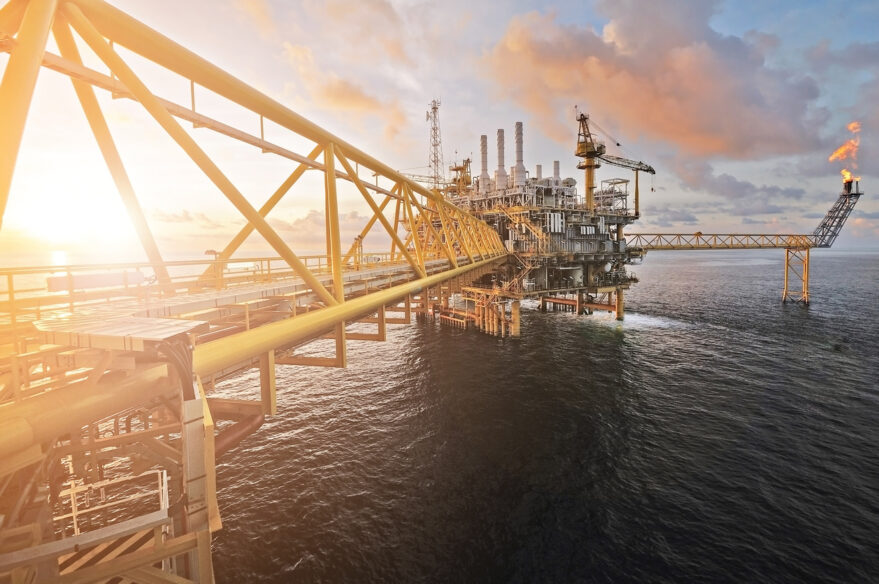Offshore Drilling For Oil: How Does It Work Exactly?

Offshore drilling is a complex process that involves extracting oil and natural gas from beneath the ocean floor. This method has been instrumental in meeting global fuel demands. Here’s a glimpse into how offshore drilling works.
Exploration and Site Selection
Oil and gas companies begin by identifying potential reserves. Geologists and geophysicists use seismic surveys, which involve sending sound waves into the seabed and analyzing their reflections to map subsurface formations. This data helps determine the best sites for drilling. Once a company identifies where to drill, it will need to determine what type of rig to use.
Types of Offshore Drilling Rigs
The first offshore rig was built in the Gulf of Mexico in 1938. The 180-foot by 320-foot freestanding drilling platform was built out of yellow pine pilings. Fortunately, offshore drilling equipment has come a long way since then. Today, oil and gas companies deploy highly advanced drilling equipment, which may include the following:
Drilling Barges
A drilling barge is best suited for calm sea conditions and shallow water. These large floating platforms are towed into place and anchored there while they drill. They can drill down several miles below the seabed.
Submersible Rigs
Submersible rigs perform best in shallow water. After a company tows the rig into position, rig operators will flood certain compartments to submerge part of the equipment. The goal is for the rig to rest on the seabed. The exact operating depth of a submersible rig will vary, but it usually ranges from 50 to 170 feet.
Jack-Up Rigs
Jack-up rigs feature three or four legs that are grounded to the seabed. The rigs are towed into place, and then operators will lower the legs to the ocean floor. The platform is then raised above the water. These rigs can typically operate at depths ranging from 80 to 500 feet.
Semi-Submersible Rigs
Semi-submersible rigs are built to drill for oil in extremely deep waters. They can drill wells in depths of up to 9,500 feet. They are partially submerged and held into place with several large anchors. The rigs are equipped with computer systems that adjust the tension on each anchor chain to minimize drift.
Drill Ships
Drill ships are among the most sophisticated types of offshore drilling systems. They have their own propulsion systems and can operate in extremely deep waters (up to 12,000 feet or more). Drill ships can drill to depths of 40,000 feet below the ocean floor.
What’s Life Like on an Oil Rig?
Working on an oil rig can be exciting. It also offers good pay and can satisfy your desire for adventure. However, life on an oil rig is physically demanding.
Some of the dangers and challenges you’ll face include the following:
- Unpredictable weather
- Dangerous chemicals
- Hazardous machinery
- Falling objects
- Structural failure
- Physically demanding work
You also have to be wary of oil and gas explosions, which are an ever-present danger when working on a drilling station.
Are Offshore Drilling Jobs Worth the Risk?
Offshore drilling is a critical part of the nation’s fuel infrastructure. Working on an offshore drilling station allows you to be a part of this infrastructure while earning competitive compensation and engaging in exciting tasks.
However, there are many risks associated with life on an oil rig. Those risks can leave you facing catastrophic injuries or even death. If you are thinking about pursuing a career as an oil rig worker, it’s vital to research the position and what it entails so you can make an informed decision about what’s right for you.
Contact our Denver Workplace Accident Attorneys at Zaner Law Personal Injury Lawyers at (720) 613 9706
For more information, please contact the Denver workplace accident lawyers at Zaner Law Personal Injury Lawyers to schedule a free initial consultation with a personal injury lawyer.
We are located in Denver, CO, and proudly serve all of Denver County.
Zaner Law Personal Injury Lawyers
1610 Wynkoop Street, Suite 120.
Denver, CO 80202
(720) 613 9706
Find us with our Geocoordinates: 39.75208145814397, -105.00017355026108

About The Author
Kurt Zaner has earned national recognition for his innovative legal strategies, securing some of the largest verdicts in Colorado. He assists injured clients in Denver with personal injury cases, including car accidents, truck accidents, wrongful death, motorcycle accidents, and more. Click here to view some of the fantastic case results that Zaner Law has successfully handled.
Location: Denver, CO


